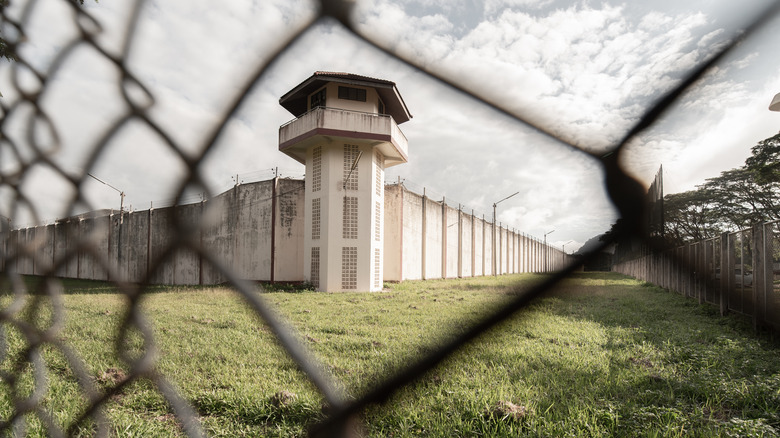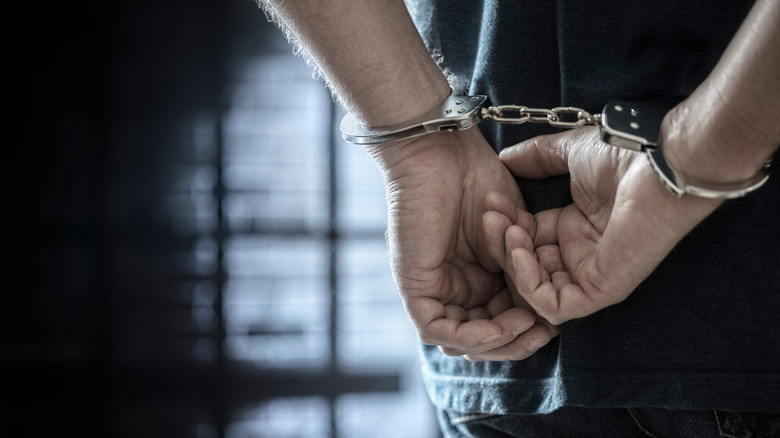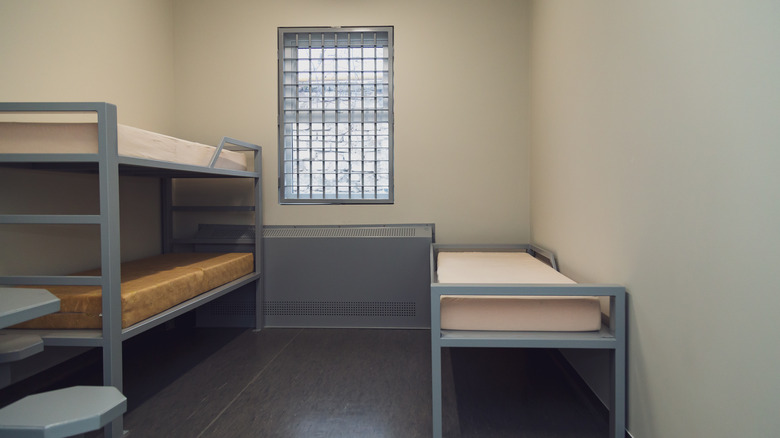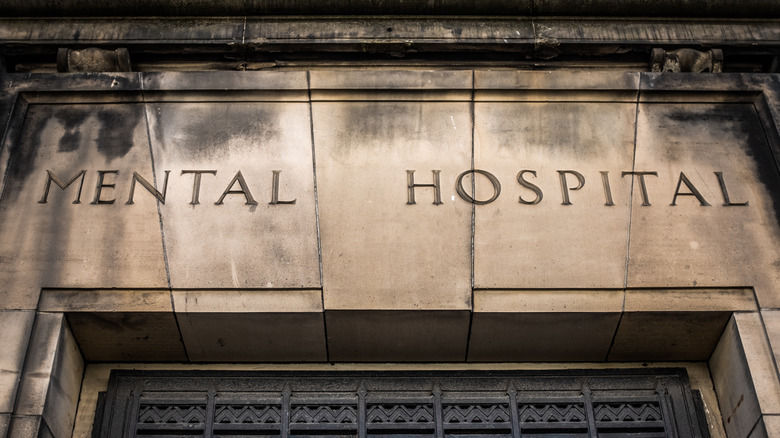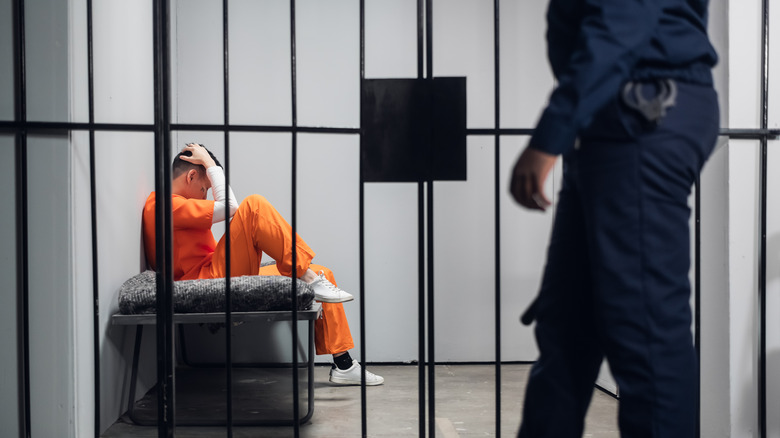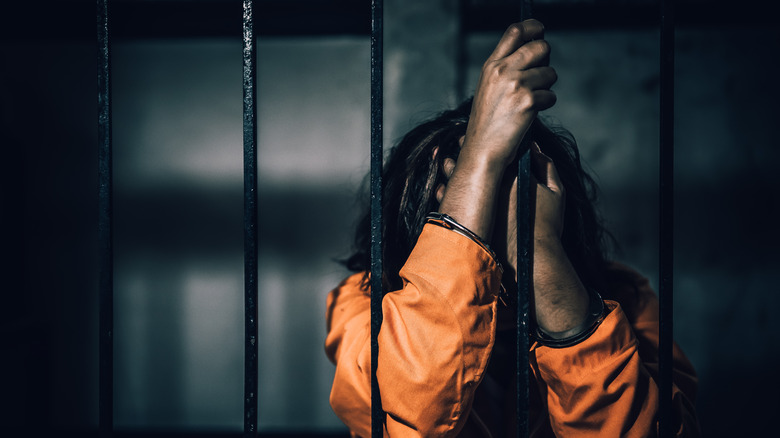How The Bureau Of Prisons Decides Where To House Federal Prisoners
Let's face it: going to prison is not good. Pretty much everyone on the planet tries to avoid this fate, but sometimes it happens to people when they are convicted of felonies, whether they set out to cause harm or just made some bad decisions. The U.S prison system is murky, corrupt, and abusive, to say the least. As The New York Times explains, there's plenty of prison misconduct and general abuse of inmates going on, much of it ignored. It's important to keep in mind that people sent to prison are human too, and many of them need rehabilitation and proper treatment.
But if one is going to federal prison, how does the process work? And how does the Bureau of Prisons decide which of the 122 federal prisons in the U.S. to send people convicted of felonies to anyway? As How to Justice explains, the process is somewhat extensive. For starters, there are various factors involved in the process, along with different classifications, security levels, considering the needs of those incarcerated, and so on. It's a little bit complicated, but with a little bit of explaining, it isn't terribly hard to understand.
Imprisoned people get sorted into different classifications
Classifying imprisoned people can get fairly complicated. The reason for this is that classifications depend on a multitude of factors, all of which determine how a person will be assigned. As How to Justice explains, there are a number of variables that determine assignment. Prison security is highly dependent on things like the type of crime committed, mental health, the history of an incarcerated person, current prison populations, and so on. In general, prisons fall under different security levels, like minimum, low, medium, high, and administrative.
As Zoukis Consulting Group says, these security levels typically serve different types of crimes. Minimum security is often for white-collar crime, while high security often holds people deemed as the most dangerous. Low-security prisons tend to have minimal security systems and fences. Medium prison systems have somewhat higher security than low, more fencing, and more staff to keep people serving time in check. "Staff-to-inmate ratios" also vary depending on the security level of a federal "institution" — as the Federal Bureau of Prisons refers to its prisons. Administrative security prisons are generally reserved for special cases, such as those with medical problems or incarcerated people who are very violent and those more likely to attempt an escape.
Prison space availability can also determine assignment
Prison assignment is not just based on the personal factors of the incarcerated either. Available space is also fairly important in determining where people serving time are assigned. As some may not know, overcrowded prisons are a real and serious problem. As the Office of Justice Programs says, harsher sentences and more crime arrests from overreaching legislation have triggered an epidemic in prisons packed to the brim, resulting in a dilemma of where to put imprisoned people. This can result in poorer conditions for people serving prison sentences, such as increased mental health problems and hostility.
As How to Justice explains, the amount of available space in a given prison is an important factor in how the federal Bureau of Prisons handles assignments. This could dramatically impact where a convicted person is kept but is not the sole defining factor here. It is important to keep in mind that overcrowding is just one of many ways that the prison system is harshly unfair to many incarcerated people.
The mental health of person sentenced to prison is also a factor
Imprisoned people with mental health issues might also have that factor into where they go, and what kind of special accommodation is given. As A&E points out, there are psychiatric hospitals where people convicted of felonies and who have mental health problems are sent. Psychologist Mikita Brottman talks about how forensic psychiatric hospitals house patients that have broken the law in some capacity. The difference between a regular imprisoned person and a person sentenced to a psychiatric hospital is that a judge determines no personal responsibility for the crime committed by the latter. As Brottman says, forensic psychiatric hospitals and prisons have many differences, such as inhabitants being called patients instead of inmates, the levels of medication and therapy given, sometimes coerced, and a higher quality of food.
One such way that people convicted of felonies enter these hospitals is via an insanity plea. As LawInfo explains, an insanity defense basically means that the accused person in question was not of mental soundness when the crime was committed. This kind of defense is exceedingly rare, being only 1% of court cases, and is only successful 26% of the time.
Transferring prisons can be a difficult and long process
Imprisoned people don't always have to remain in the same prison they were assigned to. It is possible for them to transfer to other prisons, though it's a difficult and long process. As How to Justice explains, The Federal Bureau of Prisons is in charge of approving or denying transfer requests. However, before that step, a person in prison must first submit a request to officials at their current prison. Various factors are taken into consideration when a request is processed. For example, there typically needs to be a good reason for moving, and why the new chosen prison will suit the convicted person better.
As the Department of Justice outlines, these requests are often reviewed by multiple people and offices. The request passes through the Federal Bureau of Prisons, then the Central Office of the Bureau of Prisons, where it will undergo an extensive review, then the Internal Prisoner Transfer Unit, and finally, the Office of Enforcement operations. Once the transfer is approved at all stages, only then can an incarcerated person can be moved.
Gender plays a vital role in how the bureau makes housing assignments
As expected, where a person convicted of felonies will be housed also depends on their gender. As said by Zoukis Consulting Group, the BOP actually has a variance score that differs based on gender. These points go towards determining what security level an incarcerated person should ultimately have. The higher the score, the more security. Minimum security requires 0 to 11 points, while high security requires 24 or more points. Female variance scores have a range of +15 to -16, while men get +8 to -5. Variance scores can be thought of as risk or danger factors, though this system is obviously biased and problematic.
Where transgender people who are incarcerated are housed seems to depend on the presidential administration. As NBC News reported in 2021, there were around 1,200 transgender people serving time in federal prisons out of 156,000 total. The Trump administration had reversed a policy implemented by Obama, which advocated for trans people in prison to be housed according to their gender identity. As of the time of ABC News' reporting, the policy was under review by the Department of Justice, which might see a return back to Obama-era handling of transgender people in federal prisons.
